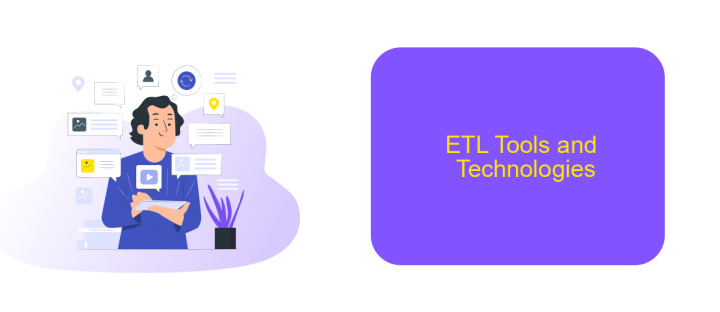ETL Data Modeling Interview Questions
In the ever-evolving field of data management, ETL (Extract, Transform, Load) data modeling plays a crucial role in ensuring efficient data integration and analysis. As organizations strive to leverage data for strategic insights, the demand for skilled ETL professionals is on the rise. This article covers essential ETL data modeling interview questions to help you prepare for your next big opportunity.
Technical Concepts
When preparing for an ETL Data Modeling interview, it is essential to understand key technical concepts that are frequently discussed. ETL stands for Extract, Transform, Load, and it is crucial for data integration and warehousing processes.
- Data Extraction: The process of retrieving data from various sources, such as databases, APIs, and flat files.
- Data Transformation: Involves cleaning, normalizing, and structuring data to meet business requirements.
- Data Loading: The final step where transformed data is loaded into a target data warehouse or database.
- Dimensional Modeling: A design technique optimized for data warehousing, involving star and snowflake schemas.
- Data Quality: Ensuring the accuracy, completeness, and reliability of data throughout the ETL process.
Understanding these concepts is vital for efficient ETL processes. Additionally, tools like ApiX-Drive can facilitate the integration of various data sources, simplifying the data extraction and transformation stages. ApiX-Drive allows seamless connection with numerous applications, automating data workflows and enhancing overall efficiency.
ETL Architecture

ETL architecture is a crucial component in data management, involving three primary steps: Extract, Transform, and Load. During the extraction phase, data is collected from various sources such as databases, APIs, and flat files. This raw data is then transformed to ensure consistency, quality, and compliance with business rules. Transformations can include filtering, aggregating, and enriching data to make it suitable for analysis. Finally, the transformed data is loaded into a target data warehouse or data mart, where it can be accessed for reporting and analytics.
Modern ETL architectures often incorporate cloud-based solutions and integration services to streamline data workflows. For instance, ApiX-Drive is a powerful tool that facilitates seamless integration between different data sources and destinations. By automating the data extraction and loading processes, ApiX-Drive reduces the complexity and manual effort involved in ETL operations. This not only enhances efficiency but also ensures real-time data availability for strategic decision-making. With such tools, organizations can build robust ETL pipelines that are scalable, reliable, and easy to manage.
ETL Design and Implementation

Designing and implementing an ETL (Extract, Transform, Load) process is critical for ensuring data integrity and efficiency. The design phase involves understanding the source data, defining the transformation rules, and determining the target data schema. Implementation requires selecting appropriate tools and technologies to automate and monitor the ETL workflows.
- Requirement Analysis: Identify the data sources, data types, and the business rules for transformation.
- Tool Selection: Choose ETL tools that fit the project requirements. Tools like Apache NiFi, Talend, and ApiX-Drive can streamline the process.
- Data Extraction: Extract data from various sources, ensuring minimal impact on source systems.
- Data Transformation: Apply business rules, data cleaning, and data enrichment to transform the data into the desired format.
- Data Loading: Load the transformed data into the target database or data warehouse, ensuring data integrity and consistency.
- Monitoring and Maintenance: Continuously monitor the ETL process for performance and errors, and make necessary adjustments.
Effective ETL design and implementation require a clear understanding of the data lifecycle and the ability to adapt to changing business needs. Tools like ApiX-Drive can facilitate seamless integration and automation, ensuring that the ETL process is both robust and scalable.
ETL Tools and Technologies

ETL (Extract, Transform, Load) tools and technologies are essential for efficiently managing and processing large volumes of data. These tools help organizations extract data from various sources, transform it into a usable format, and load it into a target database or data warehouse for analysis and reporting.
There are numerous ETL tools available, each with its unique features and capabilities. Some tools are open-source, while others are commercial products with extensive support and advanced functionality. Choosing the right ETL tool depends on the specific needs and requirements of your organization.
- Apache NiFi: An open-source ETL tool that supports data routing, transformation, and system mediation logic.
- Talend: A commercial ETL tool with a wide range of data integration and management features.
- Informatica PowerCenter: A popular enterprise-level ETL tool known for its robustness and scalability.
- ApiX-Drive: A service that simplifies the integration process by connecting various applications and automating data workflows.
When selecting an ETL tool, consider factors such as ease of use, scalability, support for different data sources, and integration capabilities. Tools like ApiX-Drive can streamline the integration process, making it easier to automate data workflows and ensure seamless data transfer between systems.
Best Practices and Troubleshooting
When working with ETL data modeling, it's crucial to adhere to best practices to ensure data accuracy and efficiency. Start by maintaining a clear and consistent naming convention for tables and fields, which simplifies data management and troubleshooting. Regularly update your data models to reflect changes in business requirements and data sources. Additionally, implement robust data validation and error-handling mechanisms to catch and address issues early in the ETL process.
Troubleshooting ETL processes can be challenging, but leveraging tools like ApiX-Drive can streamline integration and data flow management. ApiX-Drive offers automated data transfer and integration capabilities, reducing the likelihood of manual errors and speeding up the troubleshooting process. Monitor your ETL jobs closely and set up alerts for any failures or performance issues. Regularly review logs and error messages to identify patterns and root causes, allowing for prompt resolution and minimizing downtime.
FAQ
What is ETL and why is it important in data modeling?
What are the key components of an ETL process?
How do you handle data quality issues during the ETL process?
What are some common challenges faced during ETL implementation?
What is the role of data modeling in ETL?
Apix-Drive is a simple and efficient system connector that will help you automate routine tasks and optimize business processes. You can save time and money, direct these resources to more important purposes. Test ApiX-Drive and make sure that this tool will relieve your employees and after 5 minutes of settings your business will start working faster.

